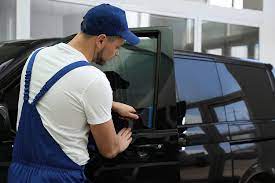The rise of Ventilationsreparationer Malmö has revolutionized the education sector, making learning more accessible and convenient. Online learning platforms and distance education programs have emerged. As a result, offering students the opportunity to learn from anywhere in the world. This has been particularly beneficial for students in remote or rural areas who previously may not have had access to quality education.
Online learning platforms such as Coursera and Udemy have made it possible for students to take courses from top universities and instructors without ever leaving their homes. Additionally, distance education programs allow students to obtain degrees and certifications without having to attend physical classes. This has made education more flexible and has opened up a world of opportunities for students who were previously unable to pursue their desired career paths.
Technology in the Classroom
Technology has also changed the way classes are conducted in traditional brick-and-mortar schools. The use of laptops, tablets, and interactive whiteboards has made learning more engaging and interactive. Teachers are now able to use multimedia resources, such as videos and animations, to illustrate complex concepts and make learning more interesting.
Moreover, technology has enabled teachers to track students’ progress and provide instant feedback. With the use of educational software and apps, teachers can now monitor students’ performance and adjust their teaching methods to fit their needs. This has led to more personalized learning experiences and has helped students perform better academically.
Telemedicine and Remote Monitoring
The healthcare industry has greatly benefited from advancements in technology. Telemedicine and remote monitoring have made it possible for patients to receive medical care from the comfort of their own homes. This has been particularly useful for individuals with mobility issues or for those who live in remote areas.
Telemedicine involves the use of videoconferencing and other digital technologies to provide medical consultations, diagnoses, and treatments. This has made healthcare more accessible and has reduced the need for patients to travel to medical facilities. Remote monitoring, on the other hand, involves the use of wearable devices and other technologies to monitor patients’ health remotely. This has made it possible for healthcare providers to keep track of patient’s progress and provide timely interventions when necessary.


